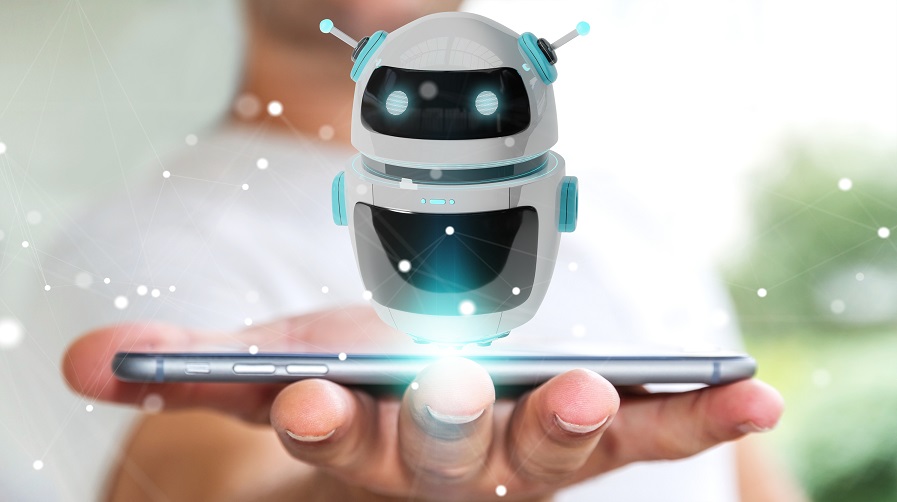When discussing the impact that technology has had on the healthcare sector, a lot of emphasis is laid on the hardware side of things. And rightly so! The advent of robotics and algorithms has helped the field of medicine leaps and bounds with regards to equipment that’s more precise and less complex than its predecessors.
But when it comes to the software side of things, there has been a similar albeit quieter revolution going on. How so, you ask? The answer is chatbots. A chatbot, as the name suggests, is a program designed to mimic human conversations over a textual interface.
When chatbots first came out they were a novelty, but today they are found all across the internet used to leverage the power of automation on websites as well as in apps. They’ve gotten so convincing that you may even have talked to a chatbot without realizing it is one!
When you start to follow that trail of thought and begin contextualizing it with regards to healthcare, you’ll see the limitless potential chatbots hold for the healthcare sectors.
The premise is simple: If users are already comfortable talking to the voice assistants on their phones regarding tasks that can be automated, then why wouldn’t they talk to a chatbot? Imagine being able to ask a bot about your symptoms to identify your ailments, or to help remind you to take your pills in a timely manner, or to help book your physician visits with the same candor you’d ask Siri or Google Assistant to set a reminder!
And you can do all of those things today itself with the suite of chatbots available! Whereas something like a Your.MD replaces a physician’s assistant and does symptoms analysis for you, you could have an all encompassing solution like the HIPAA compliant SmartBot360 too for existing medical practitioners looking to automate patient service. It is important to understand how both these categories of chatbots work to demonstrate the value chatbots can create in healthcare for both patients and practitioners, and thus play a major part in defining the industry’s future.
Let’s take the first use case from a patients’ perspective. The most common scenario currently tends to be when a user would like to schedule the chatbot to remind them to take their medicines, or in case they have forgotten a dosage or the correct way to administer it, then furnish them with instructions. In another common use case, chatbots come in handy if the user would like to find out what ailment their symptoms correspond to. In such a situation, the chatbot does probabilistic matching after recording the data and gives its best possible interpretation. Chatbots like Florence or Your.MD are quite adept at this.
When we expand our use case to a more practitioner oriented chatbot as well is when we begin to see the true scope of an all encompassing chatbot like SmartBot360. Not only can it match the symptoms and set up a screening FAQ of sorts (SmartBot360 did in fact set up one such bot for COVID-19 related queries), but because it is HIPAA compliant, it can collect all the health information a user has entered and share it with a covered entity per norms, with the covered entity in this case being hospitals or doctors’ offices. In this way, the chatbot is using technology to bridge the gap from diagnosing an ailment using the symptoms entered and if gauged to be serious, putting the user in touch with the appropriate practitioners’ office. Thus, from a practitioners’ point of view, not only is the chatbot engaging and guiding visitors and converting them into potential leads, but it is also delivering superior patient care by providing appropriate customized answers through all 7 days of the week 24 hours a day.
One positive externality arising from the widespread adoption of a HIPAA compliant chatbot that becomes instantly apparent is that the collective load on healthcare workers around the country would be considerably lightened. With the power of automation that the chatbot would bring, in relatively less serious cases the patients can simply use the artificially intelligent chatbot to diagnose their ailments on the basis of symptoms with remarkable accuracy. And should the case indeed be more serious and in requirement of proper medical attention that only a practitioner can provide, the chatbot can share the securely collected information with the practitioner’s office and schedule an appointment.
This improved process flow through the automation of redundancies allows more efficient healthcare provision thanks to a lesser burden on the shoulders of our healthcare providers especially during these trying times that COVID-19 has wrought.
And even through the ensuing times, it becomes clear how chatbots would revolutionize the healthcare industry – through eliminating redundancies, speeding up the diagnostic process, and automating appointment scheduling and care provision.
Chatbots are easy to implement using Azure technology. Know more about chatbots and its deployment methodology in Azure by choosing for right consultant for Azure Migration Services and Azure Desktop as a service.
Chatbots represent the best of what technology can do and as more and more users are introduced to them – be it a patient using Florence or a practitioners’ office leveraging SmartBot360 – they are only going to become a bigger part of the healthcare ecosystem and thus by extension, the future.

